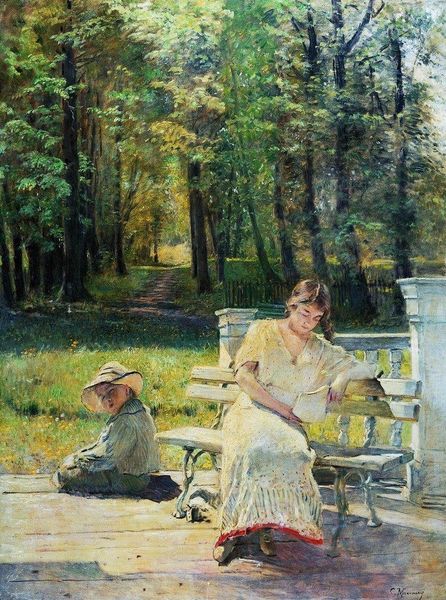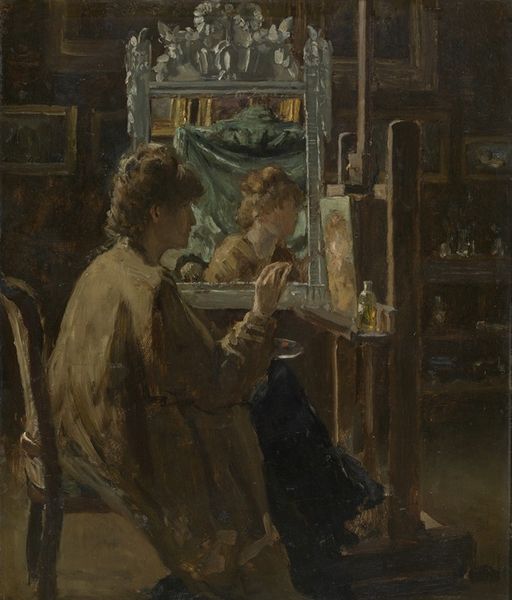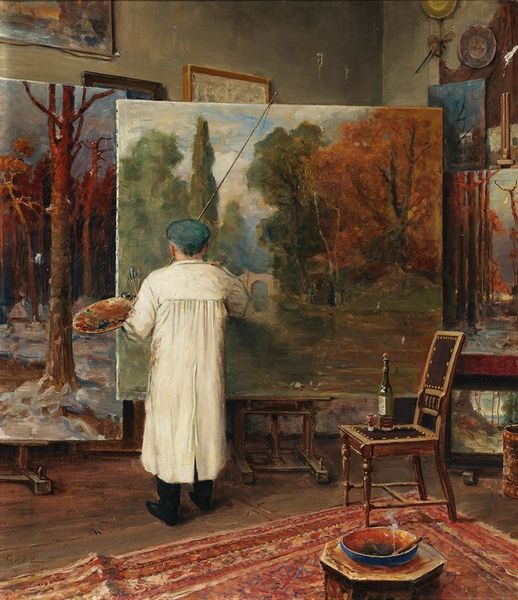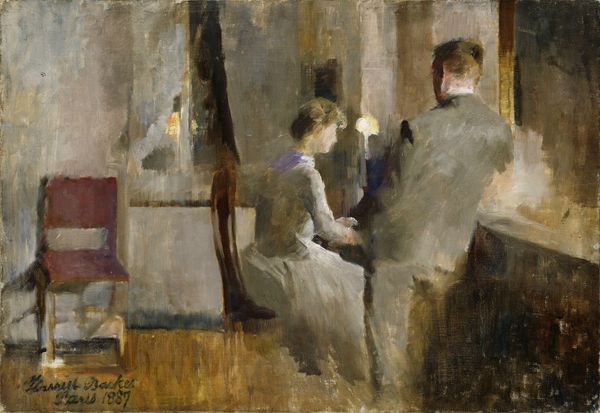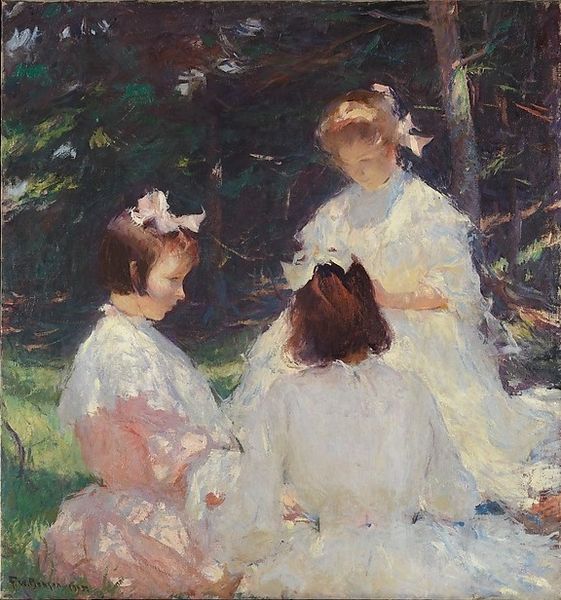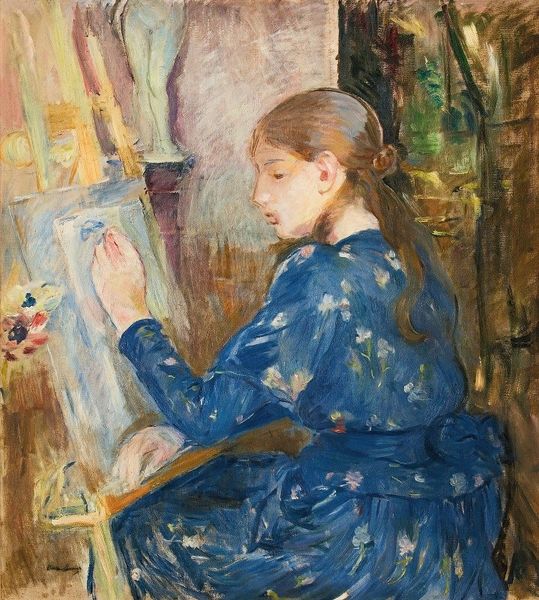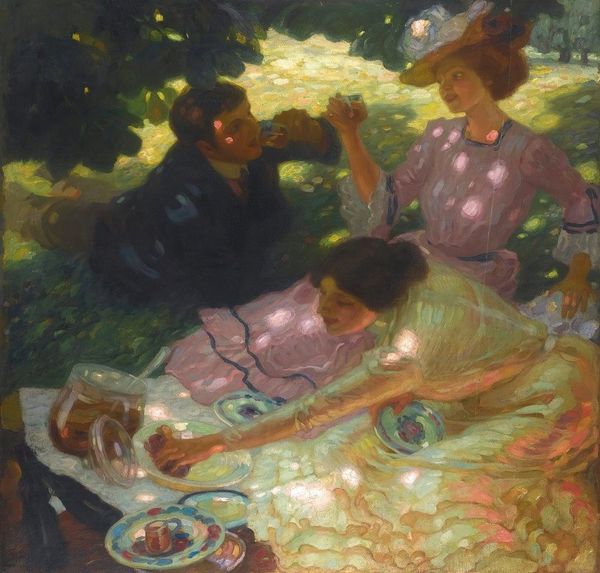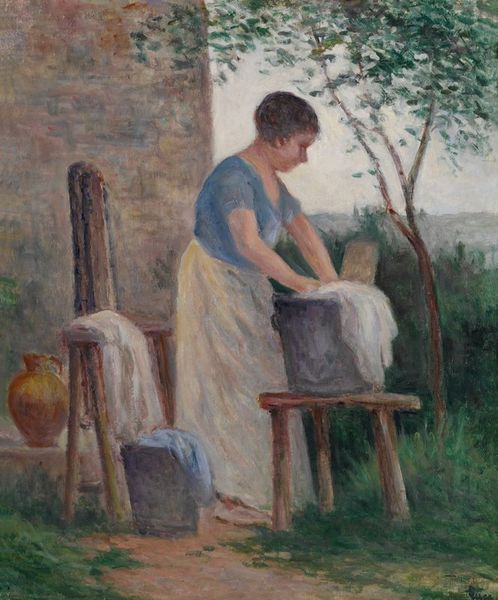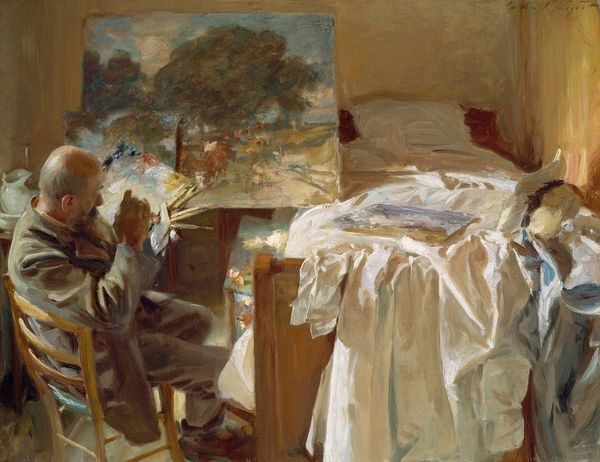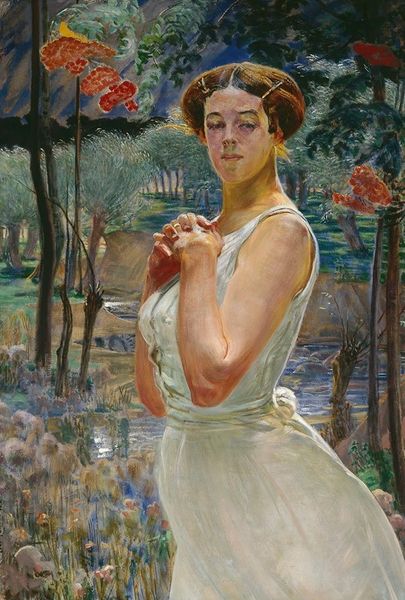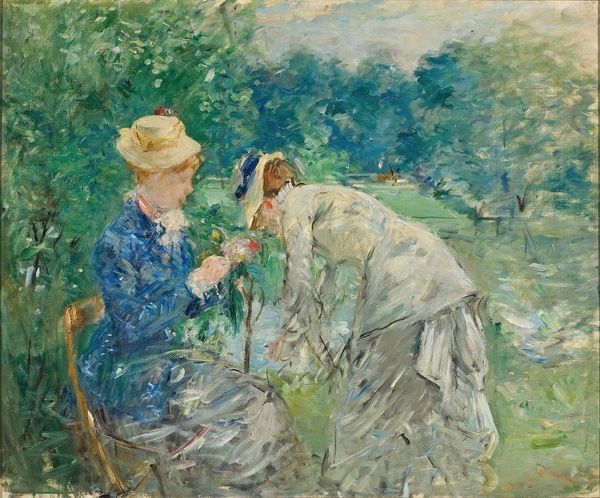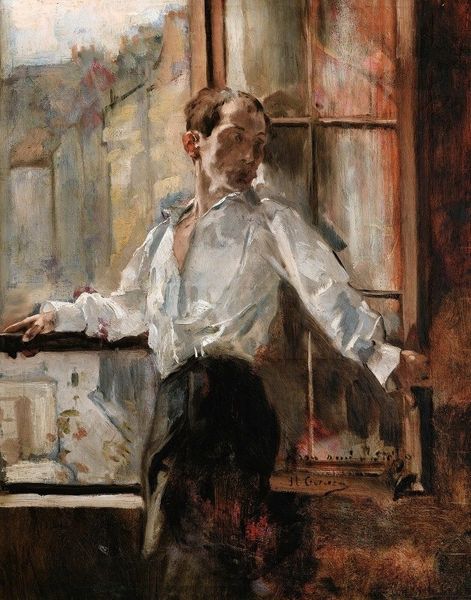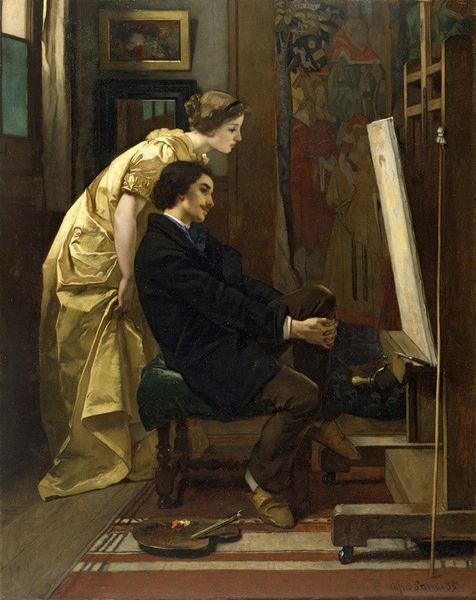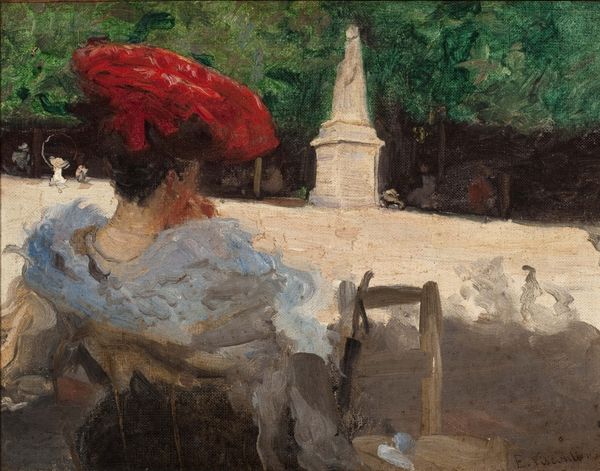
Copyright: Public Domain: Artvee
Curator: John Singer Sargent’s “The Fountain, Villa Torlonia, Frascati, Italy,” painted in 1907, offers a glimpse into the world of leisurely art-making amongst the backdrop of Italian aristocracy. My immediate impression is of luminous stillness, the soft whites contrasting the stronger textures of stone and foliage. Editor: I'm struck by the depiction of labor, although it is obscured by the apparent leisure. The materiality of paint, the implied physical exertion of working en plein air, those very portable easels...it points to a certain commodification of the artistic process itself, doesn't it? Curator: Absolutely. Considering the context, these scenes reinforce a specific gendered and classed power dynamic. Sargent captures his sister Emily sketching; perhaps it subtly reinforces the idea of women as both subject and facilitators, but always within certain social confines. Editor: The act of painting outdoors in this setting requires specific tools and access. We’re seeing leisure pursued through artistic labor that demands a specific production pipeline. Think of the pigment-making, the canvas-stretching...the support structure behind "plein air." Curator: Precisely, and it’s interesting how Sargent seems to capture a moment of transition within the art world. The casual intimacy is disrupted, of course, if you examine how Impressionism challenged established salon traditions, which previously had far stricter guidelines regarding subject matter. It could be a quietly rebellious image. Editor: Rebellious, perhaps, but it's also perpetuating the myth of the lone genius working directly from nature. The industrial processes that made his work possible are rendered invisible. Even her clothing, draped and flowing, serves to suggest a freedom that's still circumscribed by production, and consumption. Curator: True, there's tension there. It reminds us that representations of "natural" beauty and artistic creation are always culturally and historically mediated, revealing deeper societal structures. Editor: Seeing the artistic act so plainly displayed forces us to ask—what supports the act of artistic expression, who benefits, and what material conditions enable that expression? Curator: Thinking about those historical factors helps contextualize what we're looking at. A landscape that invites critical social thought. Editor: Agreed, the fountain, frozen mid-cascade, symbolizes something much more. Production! And that needs our focus.
Comments
No comments
Be the first to comment and join the conversation on the ultimate creative platform.
